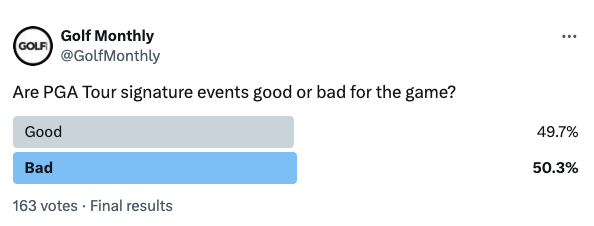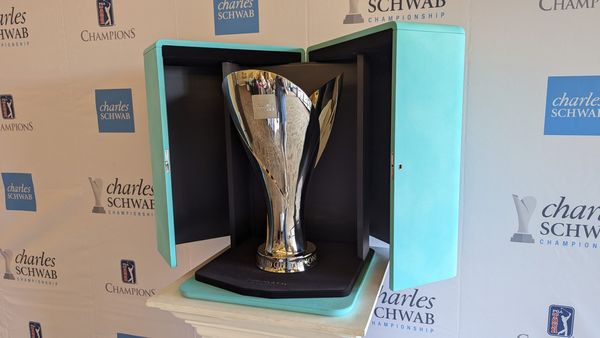
The PGA Tour's Signature Events are a series of eight elevated tournaments that feature smaller fields, huge prize money and, in some cases, no cuts.
They were brought in to reward the PGA Tour's best players and give fans the chance to watch all of the circuit's best players compete in the same fields more regularly.
But are they merely a rich-get-richer scheme or do they add genuine value to the tour and for viewing fans?
Two Golf Monthly writers have their say...
It’s been a challenging few years for men’s professional golf with LIV entering the fray and poaching a number of the leading circuits’ top players. To counter the threat, the PGA Tour has had to make changes to remain competitive and appeal to the world’s best golfers. The signature event schedule is one of the ways the US circuit has done this, and to great effect.
Signature events are important for the future if men’s professional golf is to remain how we know and love it. To keep as many of the best players in the fold, playing against one another week in, week out at the best venues in the elite game, the PGA Tour has had to shake things up and hand out more in prize money.
The signature events for 2024 ran from The Sentry tournament in January through to the Travelers Championship in June. There have been eight tournaments, including iconic events like the Pebble Beach Pro-Am, the RBC Heritage and the Arnold Palmer Invitational.
These great tournaments have been elevated by their increased status as signature events. As a result of the bump-up, they have attracted stronger fields, produced more excitement for fans and delivered great winners. The list of 2024 champions reads like a who’s who of current top-level men’s golf – Rory McIlroy, Scottie Scheffler, Hideki Matsuyama and Wyndham Clark (all Major winners) have tasted glory in them this year.
PGA Tour signature events are a great addition to the world’s premier golf circuit. Their establishment will help secure the future of both the tour and the men’s professional game.
The eight signature events contested by the PGA Tour’s top players this year boasted limited fields, vastly enhanced prize funds and FedExCup points, winners’ cheques of $3.6 to $4 million and no cut or a fairly nominal one.
Apart from the FedExCup points and number of holes it’s all a bit like LIV, isn’t it? No surprise given how under attack the PGA Tour has been since the rival tour bought many of its best players by throwing money around like it grows on very tall trees.
Maybe it does, metaphorically at least, in Saudi Arabia. But in America is this really sustainable or desirable? Outgoing R&A chief executive Martin Slumbers, no stranger to top-level finance, has likened the economic value of golf to a pie.
“What we’re really talking about is getting the balance between, particularly, the prize money and the investment into the game in a way that we can ensure the pie grows, and if the pie grows, everybody does better,” he has explained, before warning: “If you reallocate incorrectly within an existing pie, there’s a real danger that the pie will shrink.”
While signature events may seem a good solution for the top players who didn’t defect to LIV, if they take too much out of the existing pie it could prove unsustainable. As for desirability, do we really want lesser events more richly rewarded than the Majors?
Only the US Open offers a bigger first prize than the eight signature events, while the inflated purses and FedExCup points threaten to take the PGA Tour worryingly close to a rich-get-richer closed shop. For these reasons, signature events are a turn-off for me.
What our audience said:











